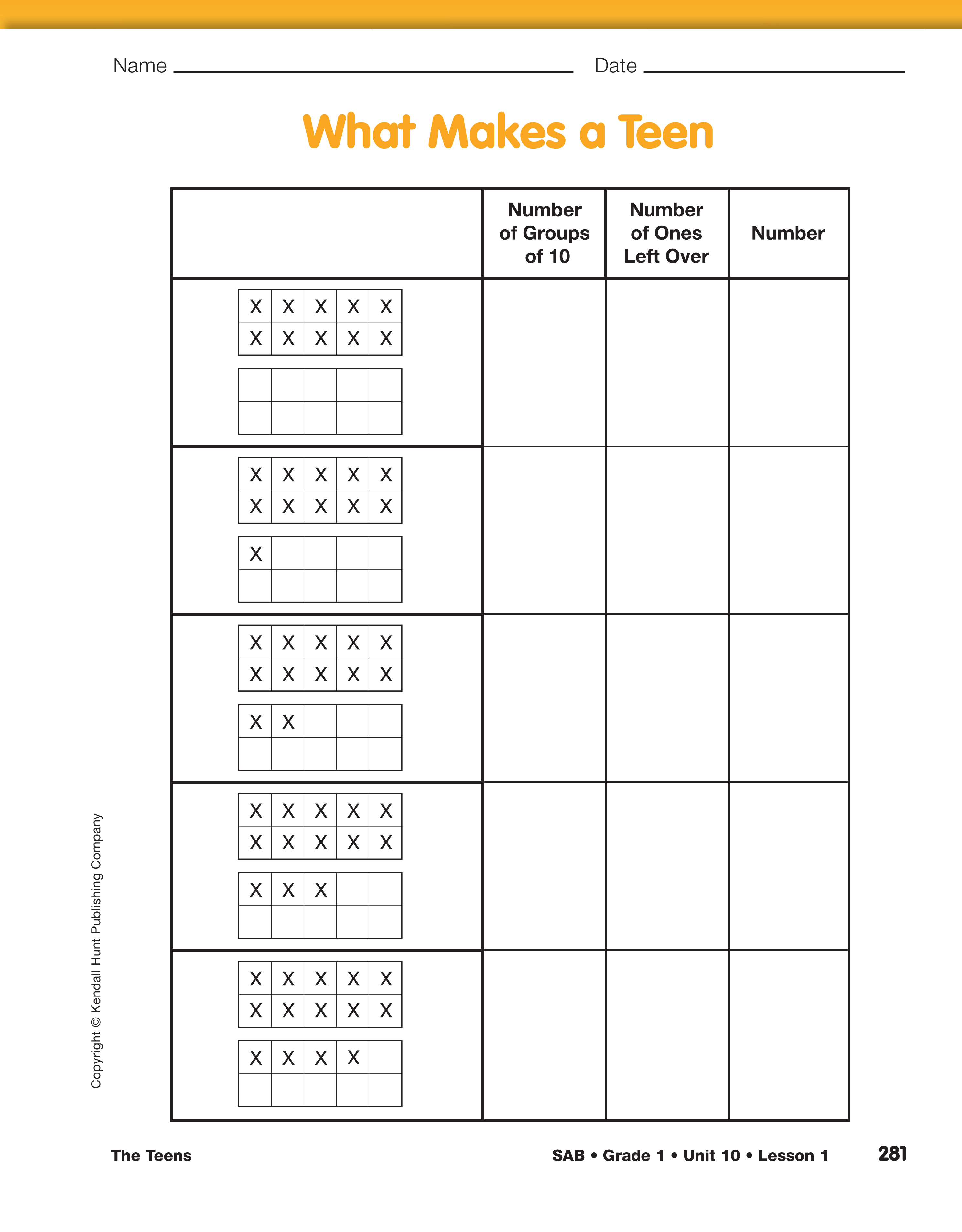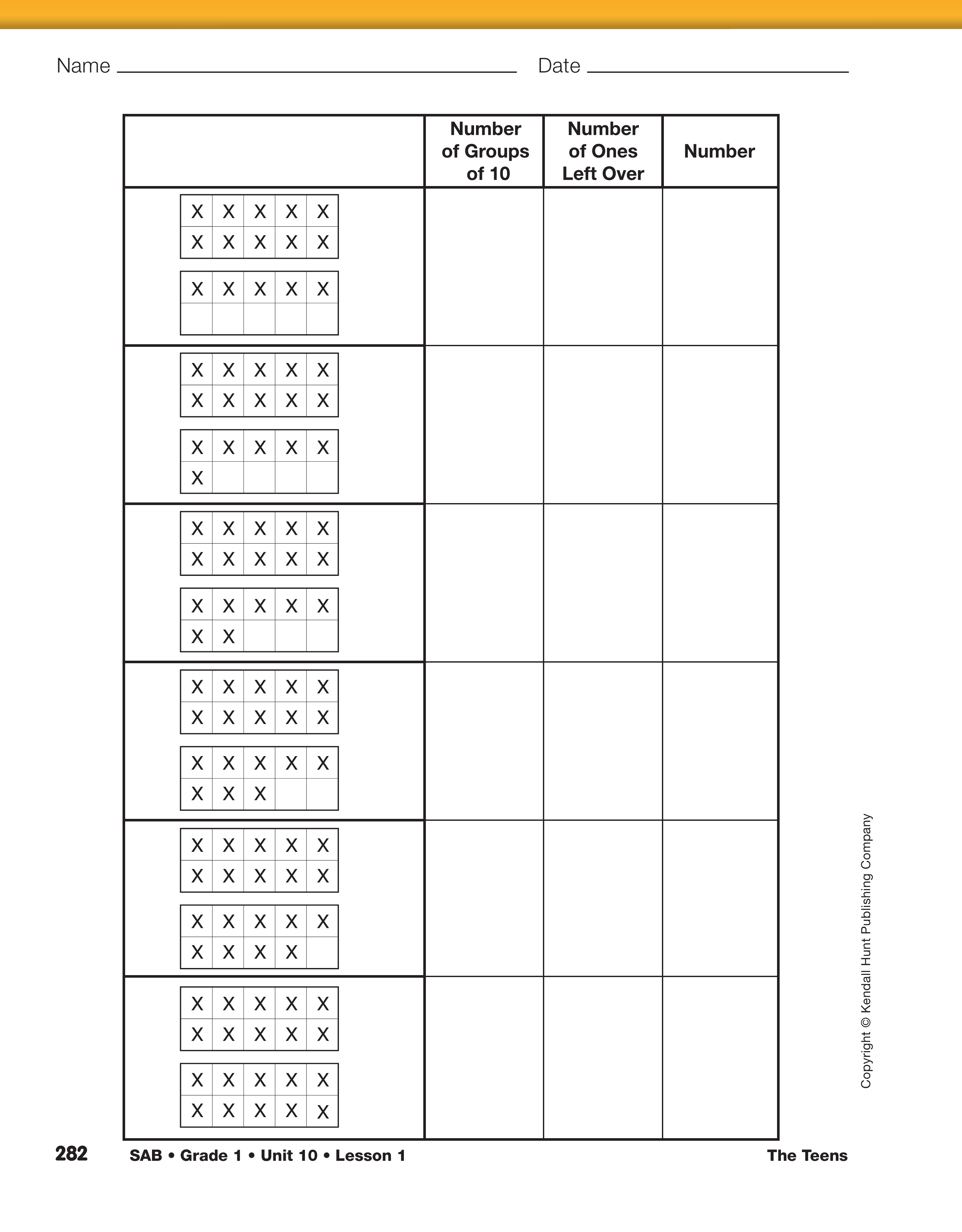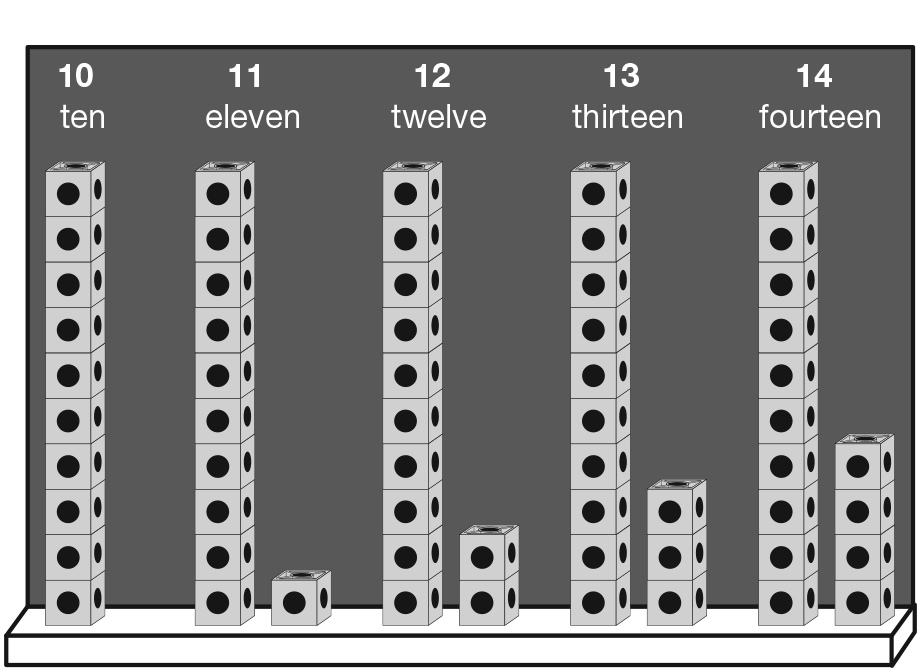The Teens
Est. Class Sessions: 1–2Developing the Lesson
Part 1: Where Are the Teens?
Direct students' attention to the class number line. Point to the numbers 11–19 and ask students to name these numbers as you point to each one.
Ask:
Display the 100 Chart from the Student Activity Book Reference section.
Ask:
Display the Two Ten Frames Master.
Ask:
Show one full ten frame and a second ten frame with 6 marks or cubes.
Ask:
Tell the class that even though they already know a lot about the teens, they will be spending some time today thinking about "what makes a teen?" Students begin the What Makes a Teen? pages in their Student Activity Books.
Discuss the first row on the page.
Make sure students understand the directions; then have them complete the pages. As students are working, give connecting cubes to students who appear to be finishing early, assign them each a number from 10 to 20, and ask them to represent that number using connecting cubes. Suggest that they use their completed pages to help, but do not give further direction.
As students complete their cube models, have them place the models on the ledge of the board in numerical order, as shown in Figure 2. Some students may have built a stack of ten and a shorter stack for the ones. Other students may have put all the cubes together in one long stack. When all the students have finished the pages, draw attention to the cube models as students have built them.
Say:
With each one of the models, ask the class how it can be reconfigured to make it show the ten and the ones left over. As students direct, break the ten off and place the short stack of ones next to it as in Figure 3. Above each model, write the Arabic numerals for the number and the spelling of the word, for example, "13 thirteen." Have the class say the numbers aloud as you write them.
















